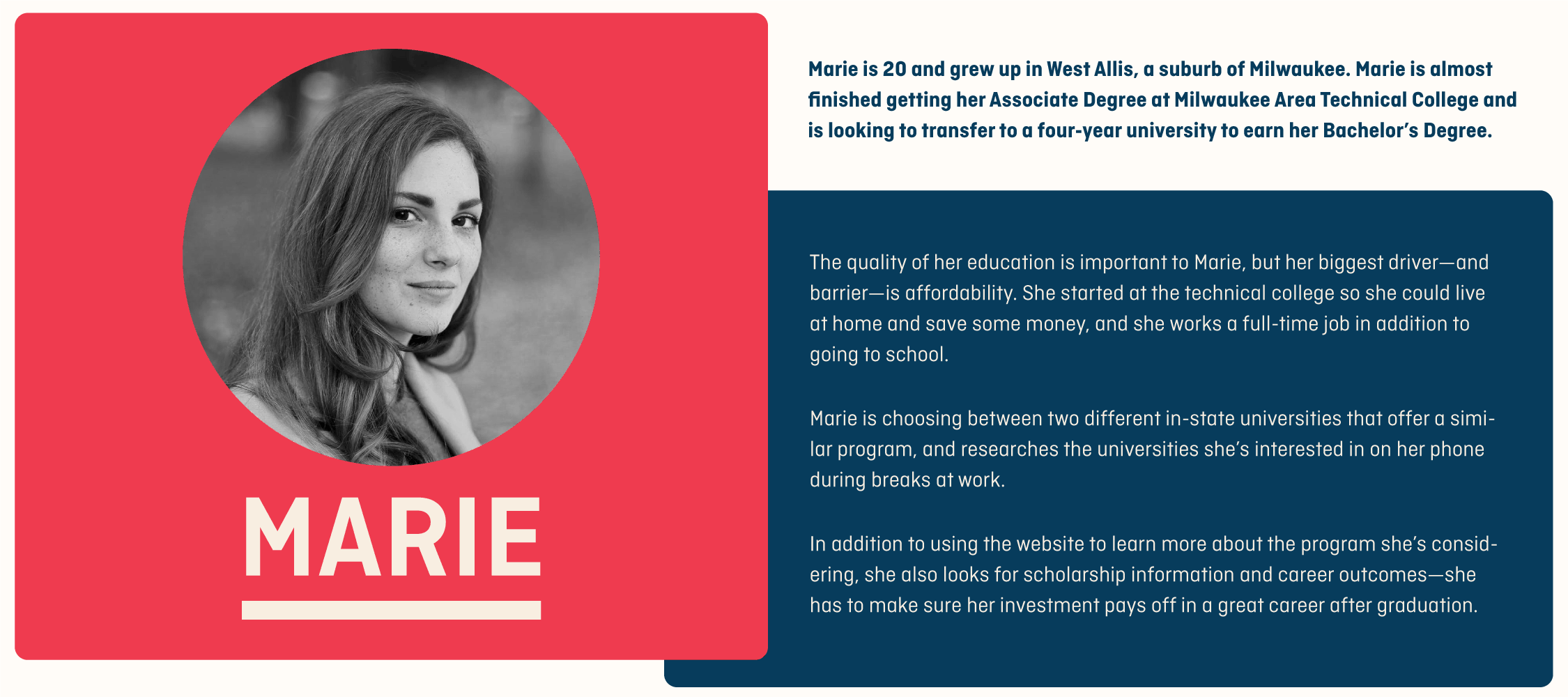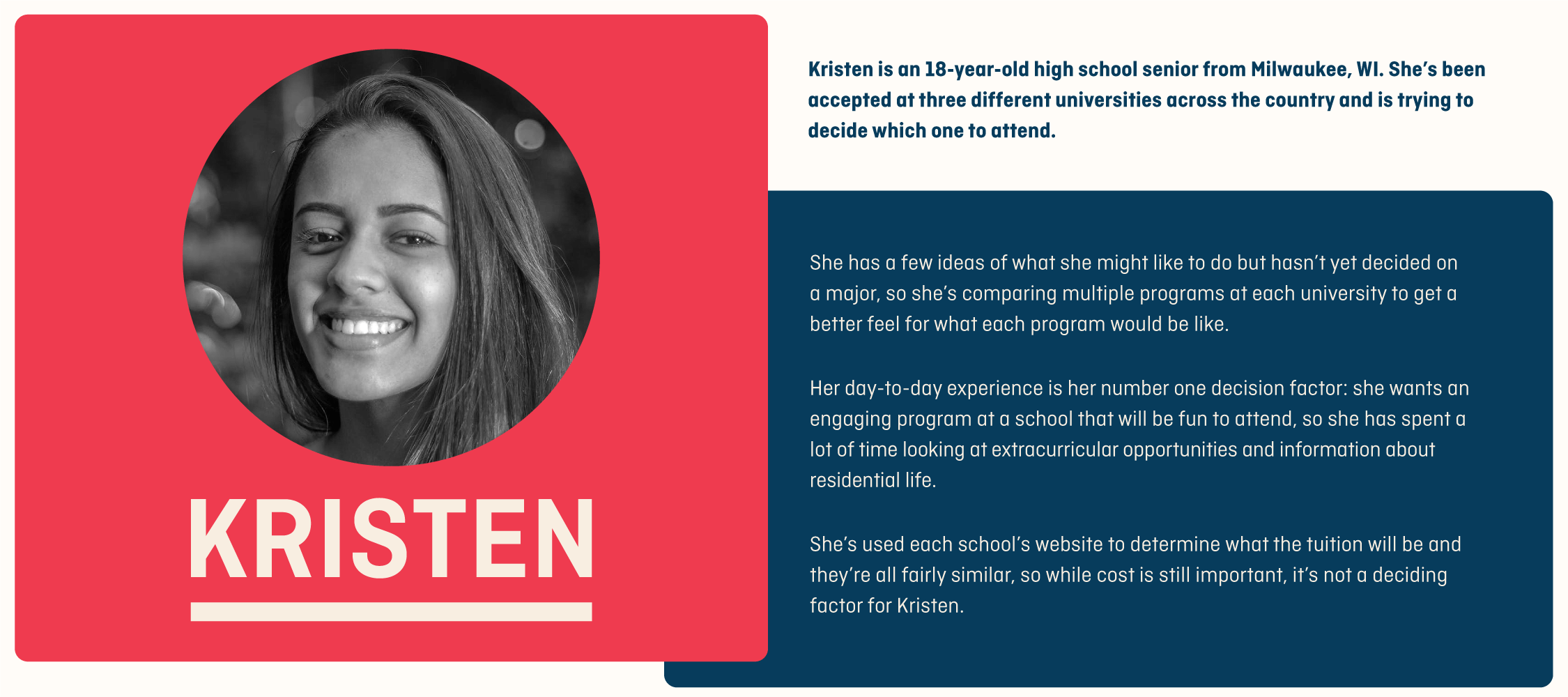

Contact Jen to learn about how we can deliver results for you.
Imagine two students, Student A and Student B. Based on your website analytics, you already know a lot about them:
Students A and B seem pretty similar, don’t they? They’re both female, around the same age and interested in tuition information. The same marketing message or web copy would probably appeal to both, right?
Maybe not.
It’s never been easier to gather data about prospective students. From Google Analytics, you can easily see not only demographic information like age, gender and location, but also website behavioral data that can offer insights about what prospects are most interested in, and what might make them more likely to convert.
What’s missing from this data? The critical psychographic factors that drive a prospective student to enroll in a course, apply to a program, or even take the first step toward learning more about what you can offer.
Let's imagine two additional students, Marie and Kristen:

Marie is 20 and grew up in West Allis, a suburb of Milwaukee. Marie is almost finished getting her Associate Degree at Milwaukee Area Technical College and is looking to transfer to a four-year university to earn her Bachelor's Degree. Her primary decision factor in choosing a college is affordability.

Kristen is an 18-year-old high school senior from Milwaukee, WI. She's been accepted at three different universities across the country and trying to decide which one to attend. Tuition for each of the schools is pretty similar, so she wants to find the college with the best day-to-day experience.
Spot any differences? Which prospective students feel more real to you? Which do you feel more confident you could convince that your school or program is right for them?
While all four students are demographically similar and exhibited some of the same behaviors on your website, Students A and B are audience profiles based on your site data, while Marie and Kristen are personas.
A persona is a fictional representation of your intended audiences based on data. The persona is given a name, personality and behaviors that align with the demographics and psychographics of the audience they represent. Personas model, summarize and communicate these broader audiences based on real-world observations (such as your Google Analytics data or interviews with your Student Services team) and qualitative research, which helps add psychographic context to your behavioral data.
Without personas, these users look largely the same, and you’d likely send them the same marketing email or direct them to the same website content.
Developing higher education personas can be very powerful, as you’re often managing a multitude of website and marketing audiences with differing needs and goals, as well as a number of stakeholders with many responsibilities and conflicting priorities.
Personas help everyone on the team get on the same page and allow you to:
But most importantly, personas allow you to move beyond what happened to why it happened, which in turn allows you to improve your user experience on your website and better tailor your marketing campaigns to meet users where they are. And understanding your users and creating a better experience for them can have a huge impact on ROI. Forrester Research recently found that a better user experience design could yield conversion rates up to 400%.
When you use personas, you’ll have a better understanding of what motivates prospective students like Marie and Kristen. You can send them more personalized content that will make them more likely to apply or enroll, like scholarship and financial aid information for Marie, who is price-driven, and a campus activities guide for Kristen, who is making her college decision based on the experience.
With ever-increasing competition for students, it’s not enough to know the data: you have to understand your audiences at a deeper level. By conducting user research and developing personas, you can align your internal team, create more effective marketing materials and enroll more prospective students.